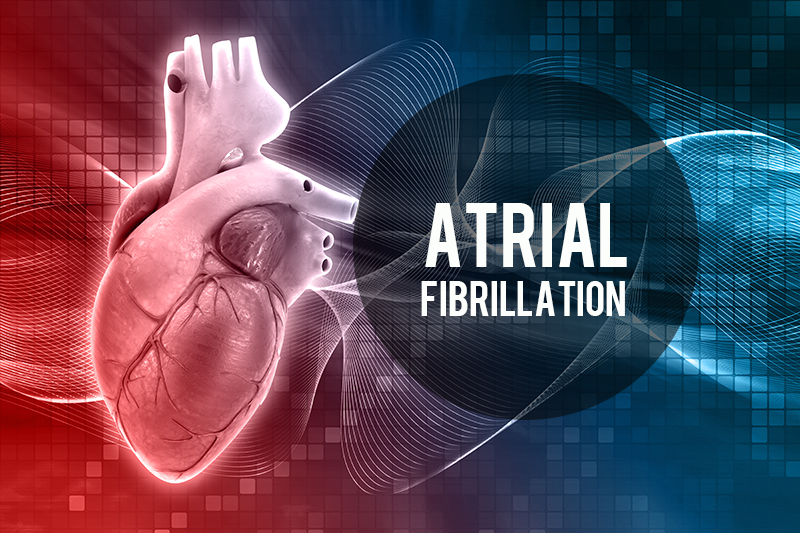Atrial fibrillation (often called AFib or AF) refers to an irregular heart rhythm that occurs when the heart beats too slowly, too fast, or in an irregular way. Regarded as the most common clinical arrhythmia worldwide, AFib affects up to 3 percent of the Western population aged 20 years or older (as per 2022 reports). People with this condition may have a much faster heart rate than usual, and the heart does not pump blood around the body efficiently. This can interrupt the normal flow of blood in the body and increase the risk of blood clots and stroke. Episodes of A-fib may come and go, or they may be persistent. Although the condition is usually not life-threatening, if left untreated it can lead to serious, life-threatening complications like heart attack, stroke, heart failure and other heart-related complications. Treatment for this condition involves a combination of medications and other therapeutic procedures to block faulty heart signals. Cardiology medical billing and coding can be challenging. Outsourcing these tasks to an experienced medical billing company is a great way to save valuable time and ensure accurate coding and claim submission.
According to the Centers from Disease Control and Prevention (CDC), about 12.1 million people in the United States will have AFib in 2030. In case of atrial fibrillation, the signals in the heart’s upper chambers (the atria) beat chaotically and irregularly. As a result, the upper chambers shake (quiver). AFib occurs when the heart’s upper chambers and lower chambers are not coordinated, causing the heart to beat too slowly, too quickly or irregularly. The heart rate in atrial fibrillation may range from 100 to 175 beats a minute. The normal range is 60 to 100 beats a minute.
As mentioned above, changes in the electrical signals in the heart cause A-fib. It can happen to anyone at any age, but is more commonly seen in older people. Certain other factors that increase the risk of the condition include – hypertension, family history of AFib, pulmonary embolism, heart disease, thyroid, alcohol consumption, sleep apnea and other long term, chronic medical conditions (including thyroid problems, asthma, diabetes, and obesity).
What Are the Symptoms of AFib?
Not everyone with AFib will experience symptoms and in those who do, the symptoms may occur intermittently. As per reports from the American Heart Association (AHA) one of the most common symptoms is a fluttering heart. Other related symptoms include –
- Sensations of a fast, fluttering or pounding heartbeat (palpitations)
- Weakness
- Shortness of breath
- Reduced ability to exercise
- Low blood pressure, dizziness, lightheadedness, and fainting
- Extreme fatigue
- Confusion or feelings of unease
- Chest pain, pressure, or discomfort
- Breathlessness, particularly during exercise or activity
Types of Atrial Fibrillation (AFib)
Atrial fibrillation may be:
- Occasional (paroxysmal atrial fibrillation) – In this type, AFib symptoms may come and go, usually lasting for a few minutes to hours. On the other hand, in some cases, these symptoms occur for as long as a week and episodes can happen repeatedly.
- Persistent – In this type of AFib, the heart rhythm doesn’t go back to normal on its own.
- Long-standing persistent – This type of atrial fibrillation is continuous and lasts longer than 12 months.
- Permanent – In this type of AFib, the irregular heart rhythm can’t be restored. However, medications can be used to control the heart rate and prevent blood clots.
Diagnosing and Treating Atrial Fibrillation (AFib)
In most cases, people are quite unaware that they have atrial fibrillation (A-fib). The condition may be diagnosed during a physical exam (listening to the heart with a stethoscope). Physicians may order several tests like – Electrocardiogram (ECG or EKG), Holter monitor, Echocardiogram, Event recorder, Chest X-ray, Stress test and blood tests to diagnose A-fib or exclude other conditions that can cause similar symptoms.
Treatment for atrial fibrillation may depend on the symptoms, how long the symptoms have been occurring, and the underlying causes of the heartbeat problem. Treatment for this condition aims to reset the heart’s rhythm, control the heart rate and prevent blood clots that can lead to stroke. Treatment modalities include – medications (such as Beta blockers, Anti-arrhythmic medications, Calcium channel blockers and Blood thinners), Cardioversion therapy and surgery or catheter procedures.
ICD-10 Codes for Atrial Fibrillation
The diagnoses and treatment procedures administered must be carefully documented using the correct medical codes. Medical billing services provided by reputable providers can ensure the correct codes on the medical claims. ICD-10 codes for AFib include –
- I48 Atrial fibrillation and flutter
- I48.0 Paroxysmal atrial fibrillation
- I48.1 Persistent atrial fibrillation
- I48.11 Longstanding persistent atrial fibrillation
- I48.19 Other persistent atrial fibrillation
- I48.2 Chronic atrial fibrillation
- I48.20 …… unspecified
- I48.21 Permanent atrial fibrillation
- I48.3 Typical atrial flutter
- I48.4 Atypical atrial flutter
- I48.9 Unspecified atrial fibrillation and atrial flutter
- I48.91 Unspecified atrial fibrillation
- I48.92 Unspecified atrial flutter
AFib occurs more often after the age of 65 years, and it may not always cause symptoms. Following healthy lifestyle choices like – consuming a heart-healthy diet, limiting the intake of alcohol, avoiding smoking, maintaining a moderate body weight, and doing regular exercise – can reduce the risk of heart disease and may prevent the risk of atrial fibrillation in the long run.
Billing and coding for cardiac conditions can be complex. Cardiologists can rely on a competent medical billing and coding company to report their services accurately on the medical claims.




